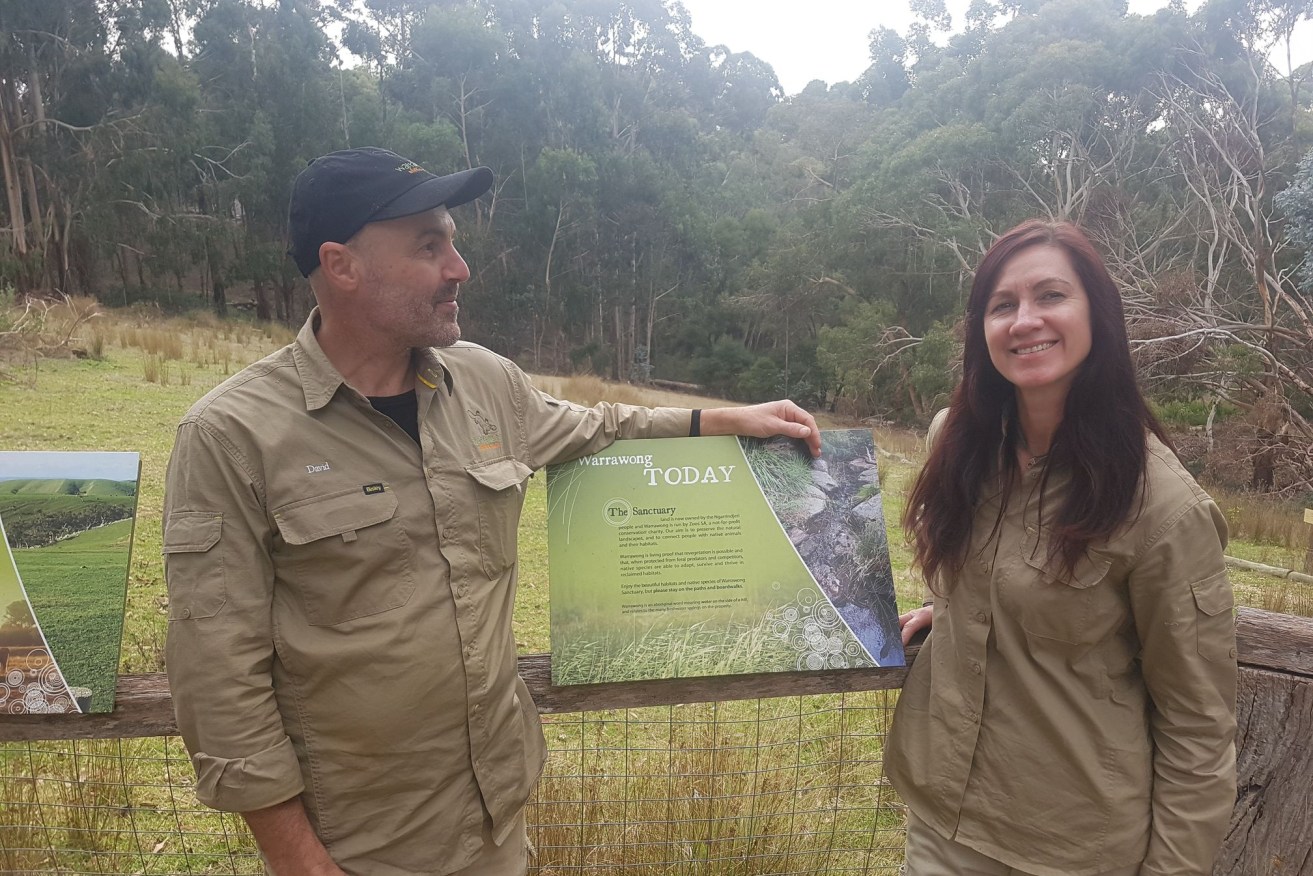Long-closed Warrawong to be restored as a wildlife sanctuary
Zoo owners from Western Australia have bought the Warrawong Wildlife Sanctuary in the Adelaide Hills, vowing to bring it back to life as a premium tourist attraction.


David Cobbold and Narelle MacPherson at Warrawong. Supplied image
The Mylor sanctuary, established by conservationist John Wamsley as a fenced, feral-free zone, has been bought by WA couple David Cobbold and Narelle MacPherson, who today promised to rebuild Warrawong as a “contemporary wildlife sanctuary” with accommodation, hospitality and education facilities.
The husband and wife team own Peel Zoo, south of Perth, which they say they transformed from a derelict bird park into a home for about 100 species of mostly Australian animals.
Warrawong was taken over by Zoos SA in 2010, but they closed it only three years later, saying they could not make the venture sustainable.
Cobbold is undeterred by the sanctuary’s history, saying the purchase reminded him of the beginnings of Peel Zoo 12 years ago.
“We are determined to reinstate this wonderful site back into a premium wildlife sanctuary,” he said.
MacPherson said that even though the site was abandoned four years ago, “some of the animal populations are still here and there is great infrastructure for animals and public alike”.
“That gives us a strong foundation so we can reinvigorate Warrawong as a jewel in the crown of the Adelaide Hills,” she said.
The couple says Peel Zoo attracts 45,000 visitors a year and employs five full-time staff.
MacPherson promises that, like Peel Zoo, Warrawong will have a strong educational focus.
“Peel Zoo and Warrawong Sanctuary are natural outdoor classrooms.”
In another connection, Peel Zoo’s head zookeeper and vet both camped at Warrawong when they were school children.
Cobbold told InDaily the couple hoped to re-open the sanctuary in about 12 months.
The external fencing has managed to keep feral animals out, which means there are still koalas, potoroo, bandicoots and red-necked wallabies thriving in the sanctuary. There are platypuses in the dam, and abundant birdlife in the 11-hectare site.
Cobbold said there was considerable work to do to remove invasive plant species, including blackberries, lillies and a thick carpet of forget-me-nots.
“Whether it’s a domestic dwelling, a farm or even a piece of pristine bushland, if you turn your back on that for four years there will be changes,” he said.
“We would like this place to be as close to (natural) Australian bushland as possible.”
He said the couple’s venture has already attracted attention and excitement from the local community, many of whom are keen to help in the Stock Road sanctuary’s restoration.
The couple has sold their house in WA and put Peel Zoo on the market so they can concentrate fully on Warrawong’s reopening.
Anyone interested in getting involved can make contact through the Warrawong website.




